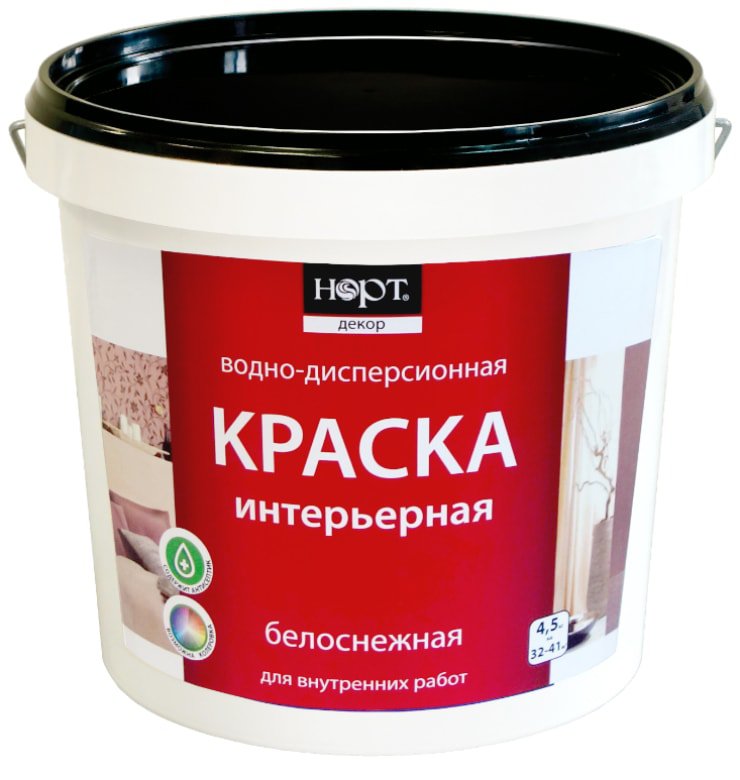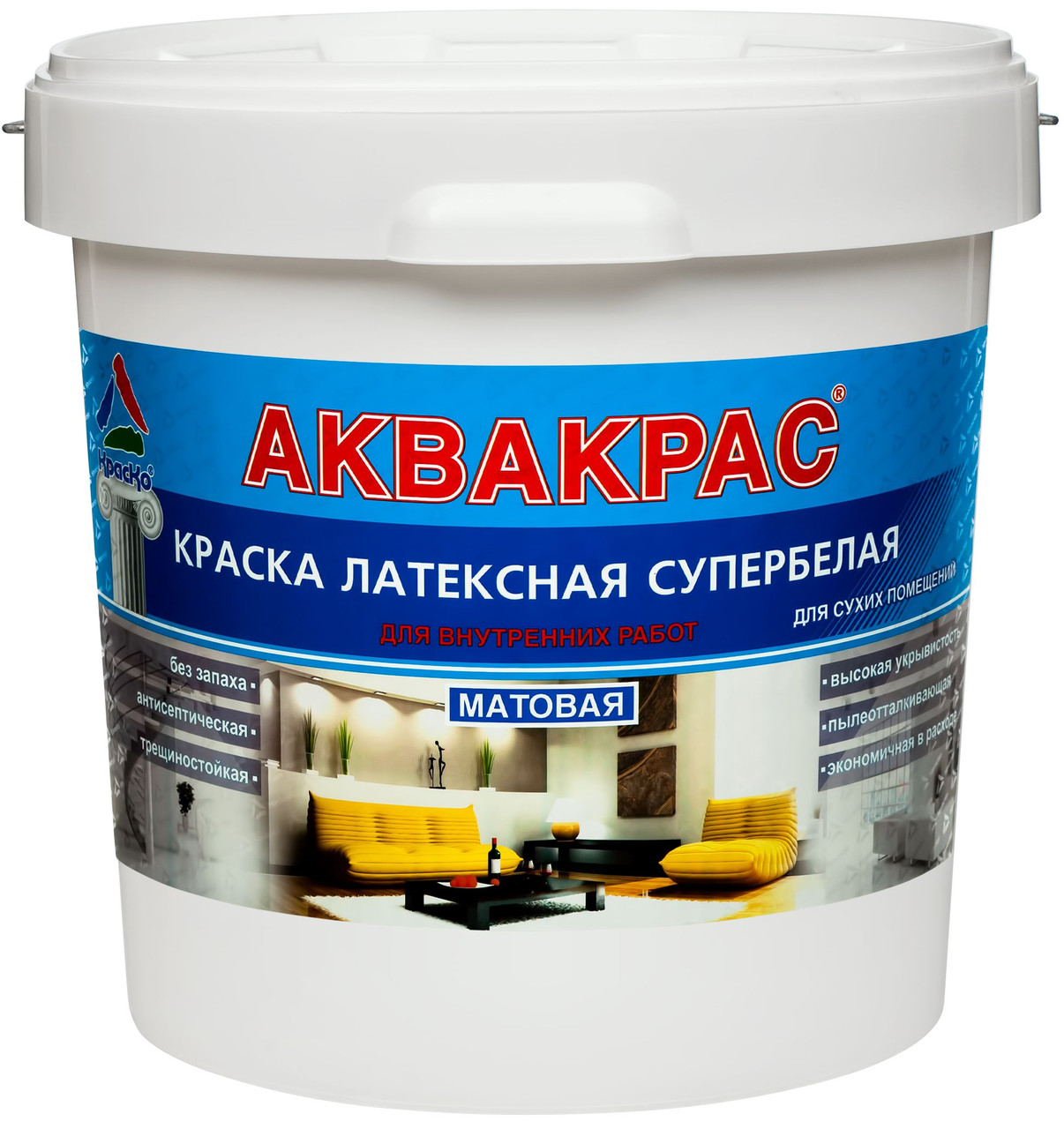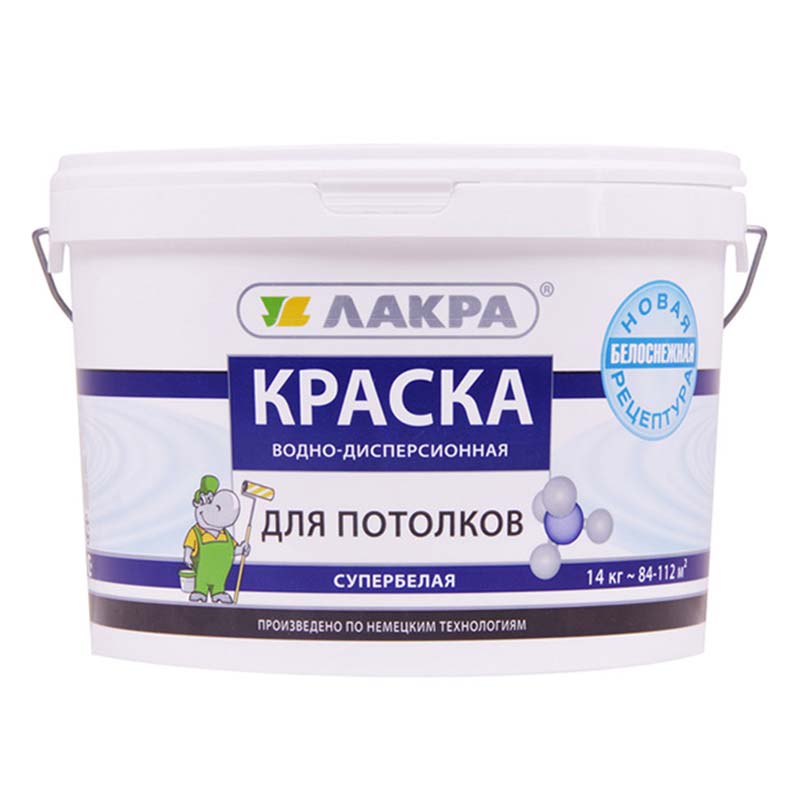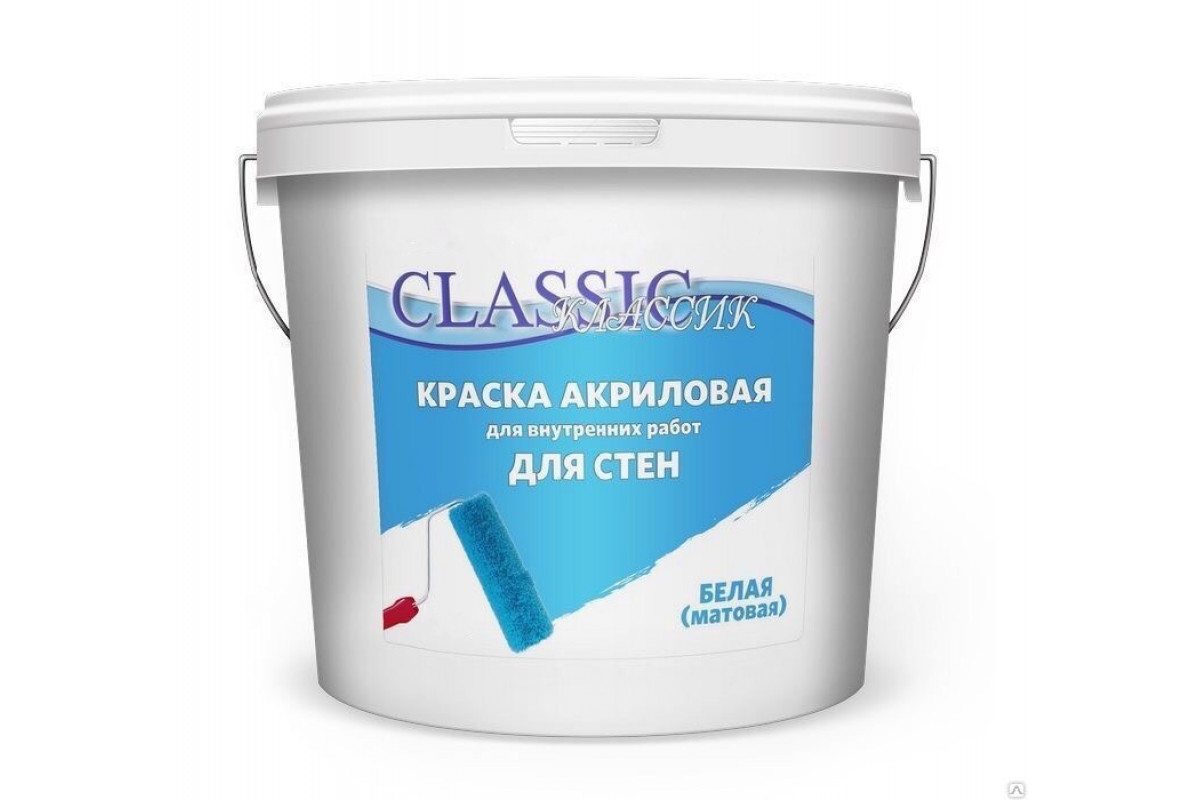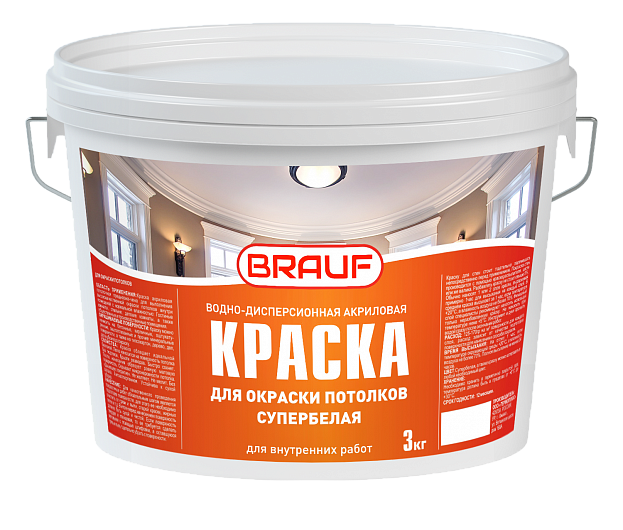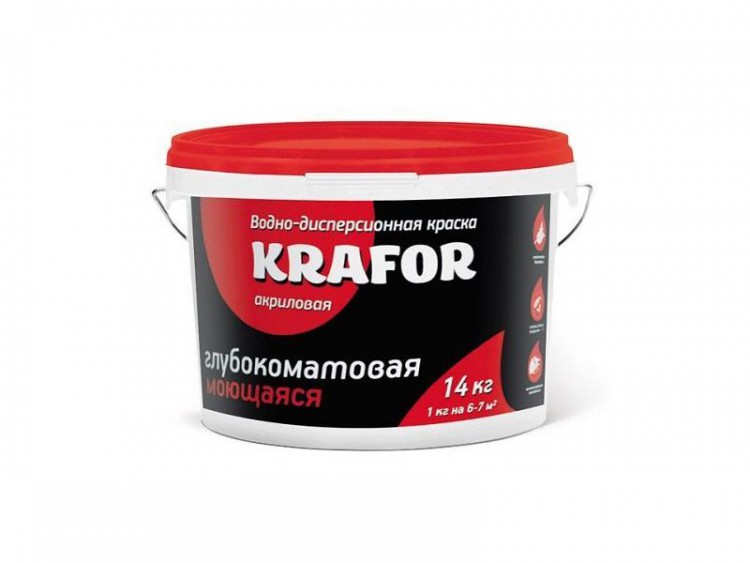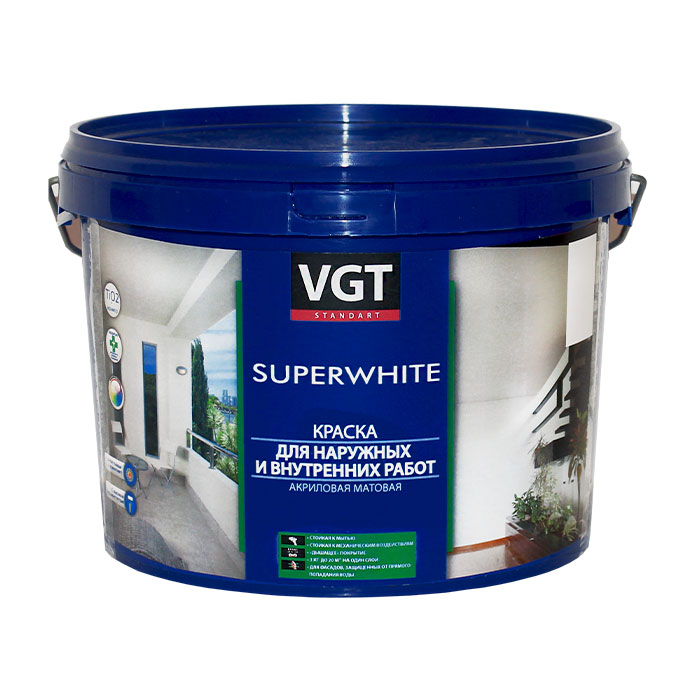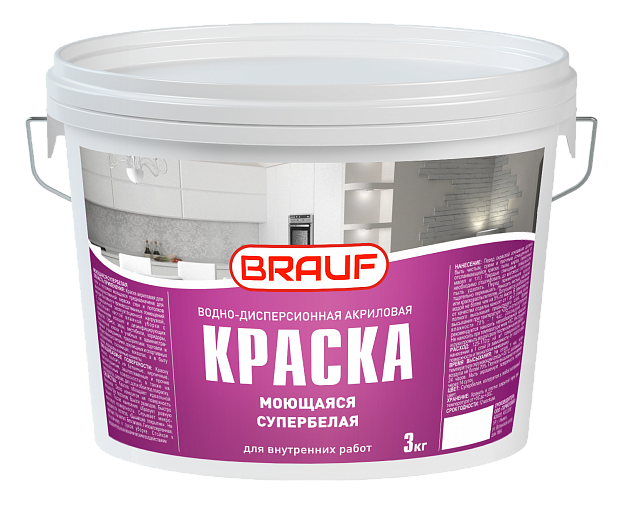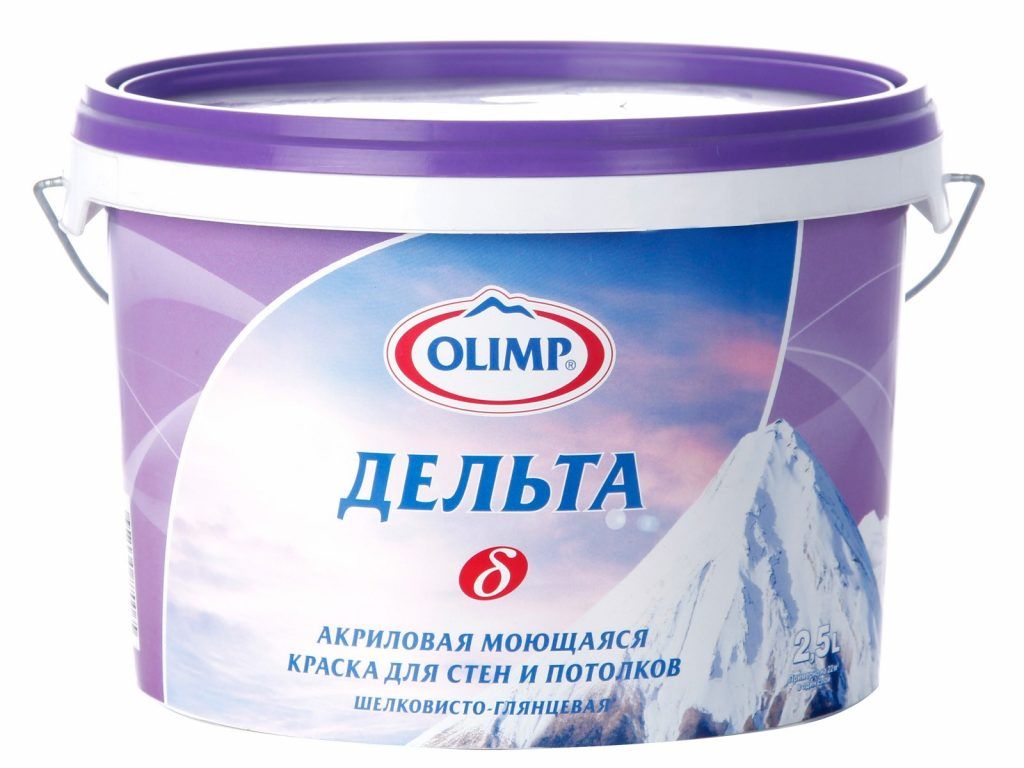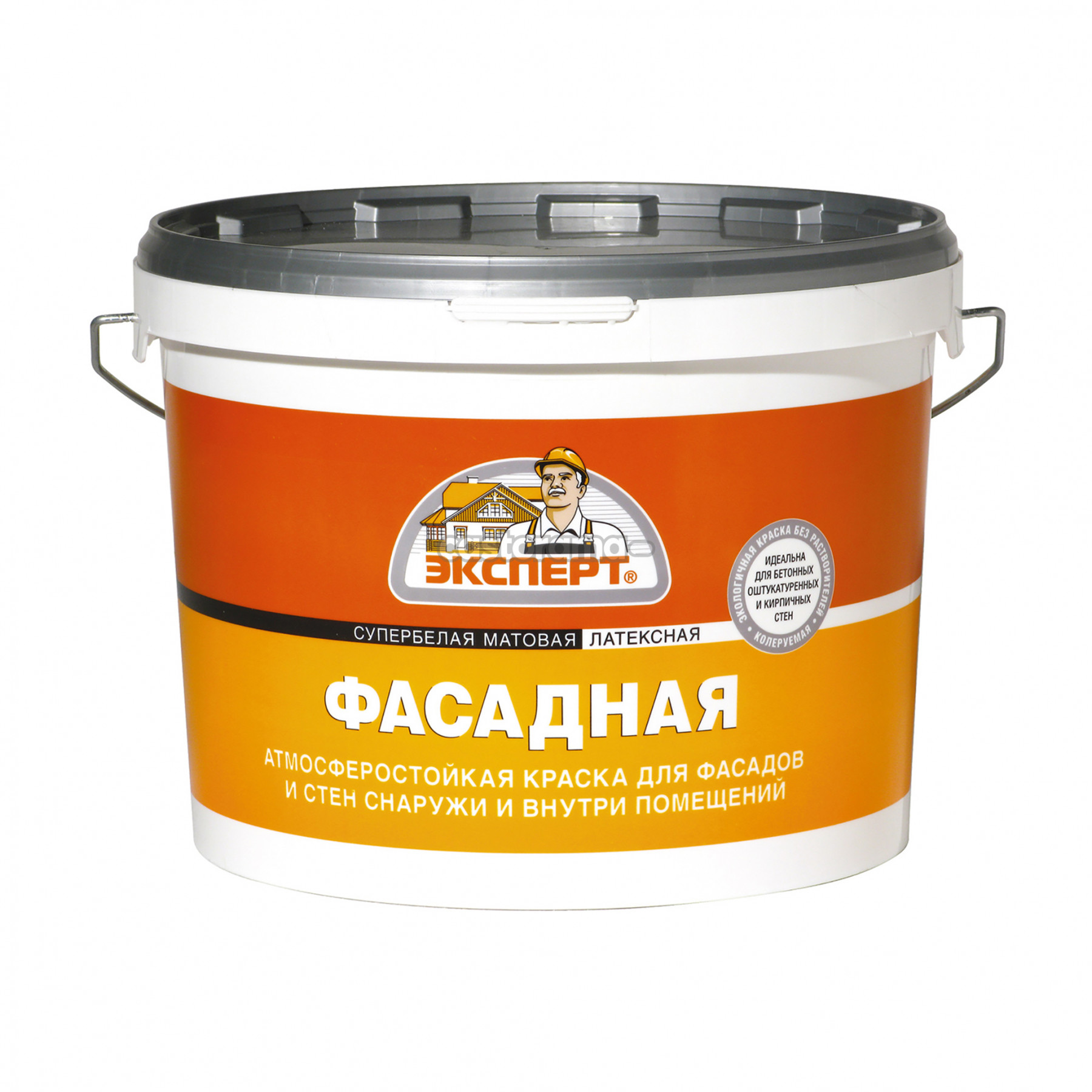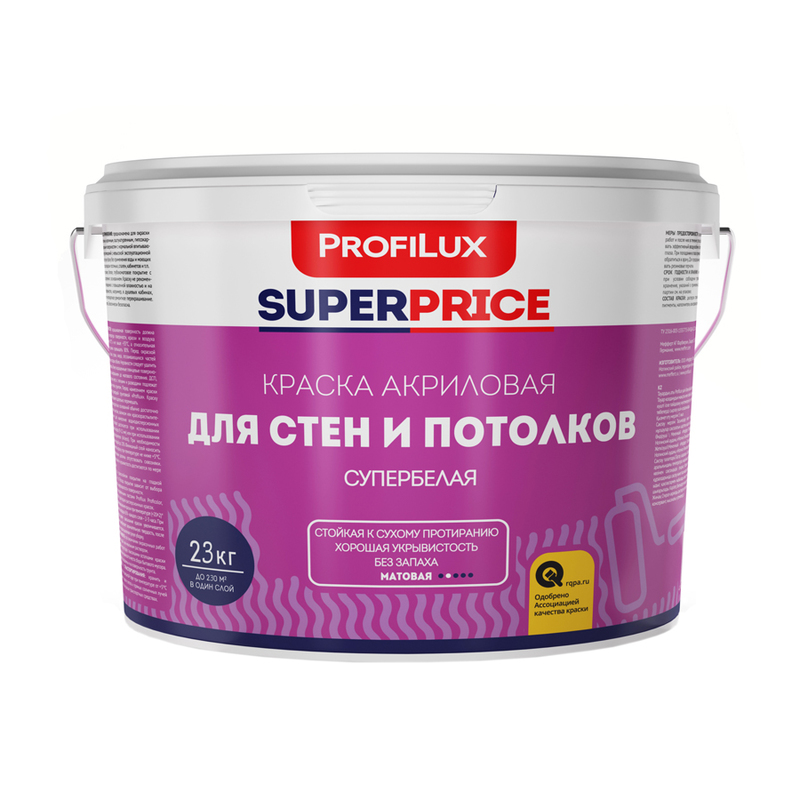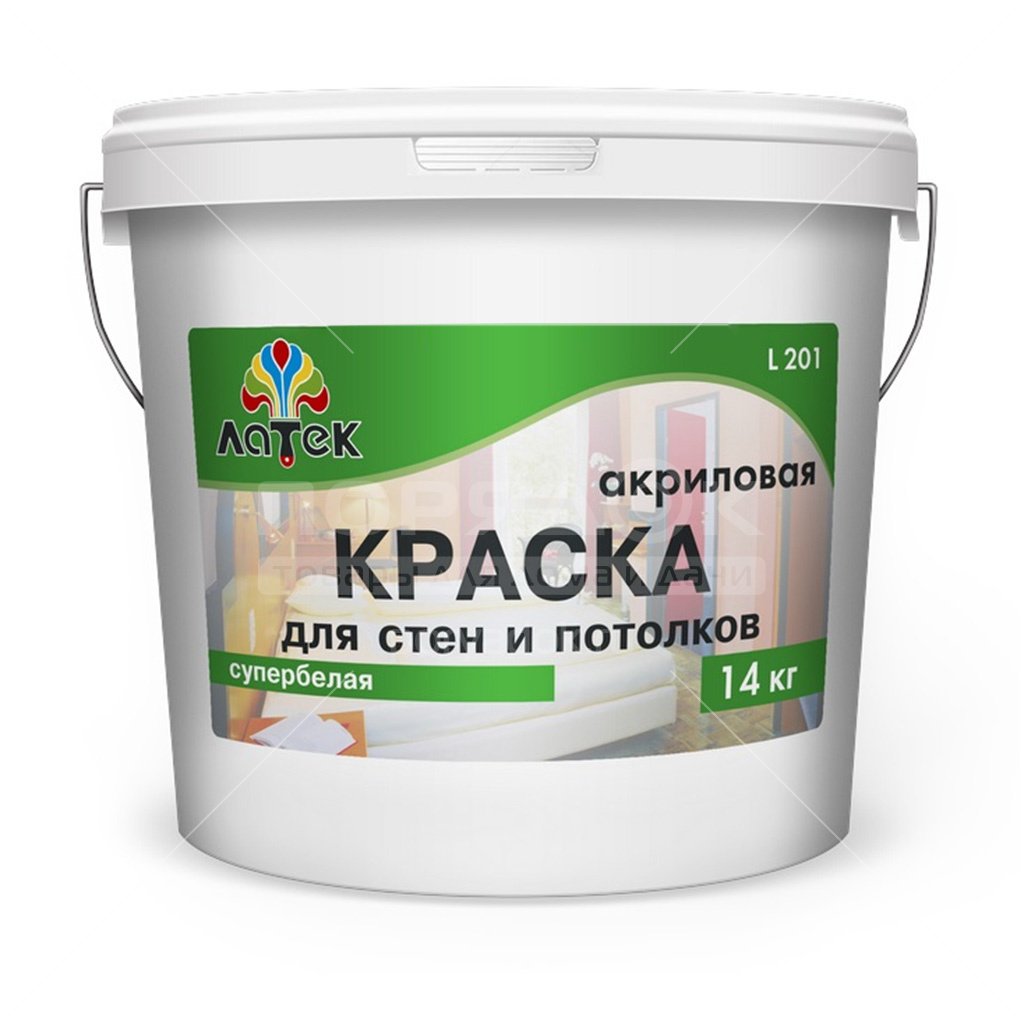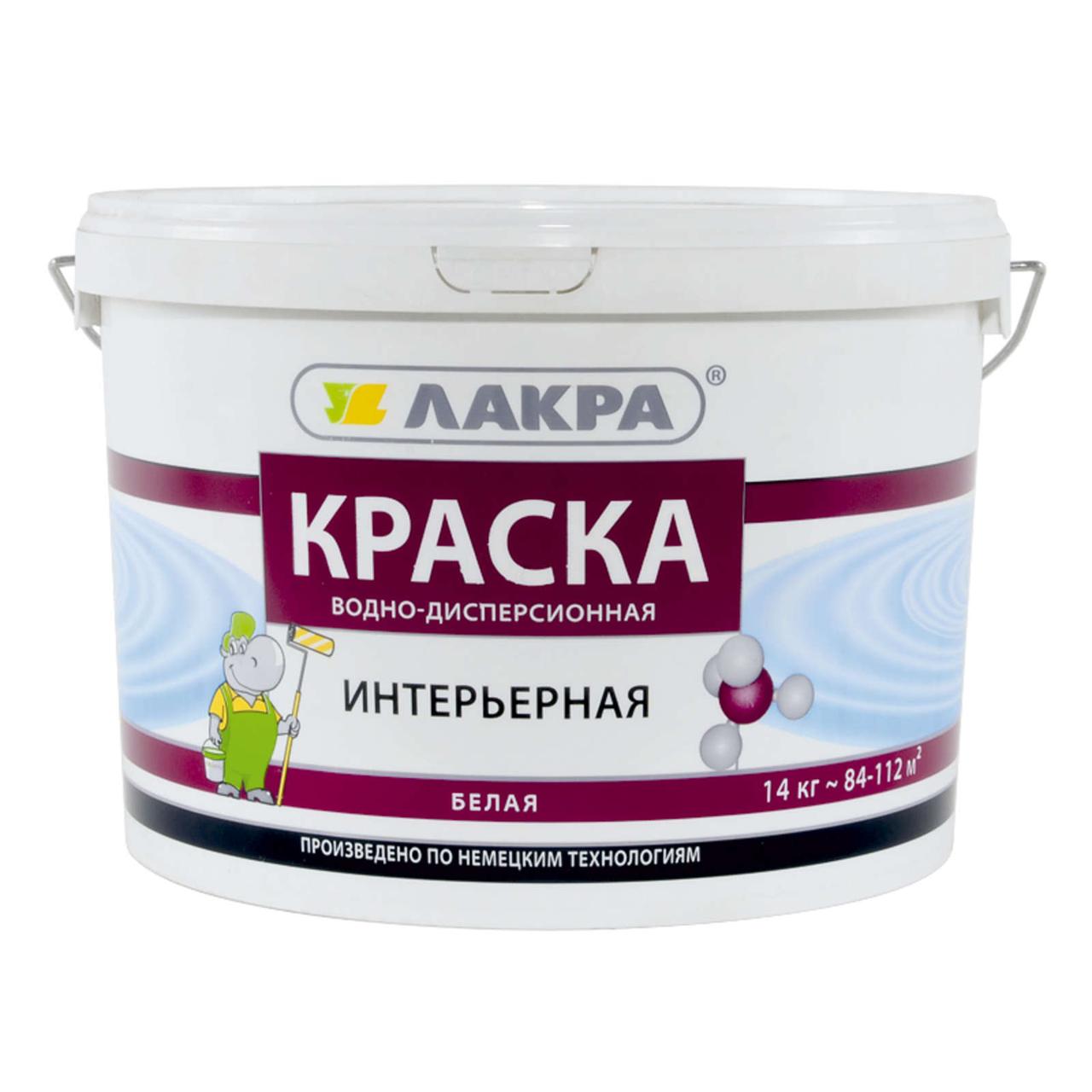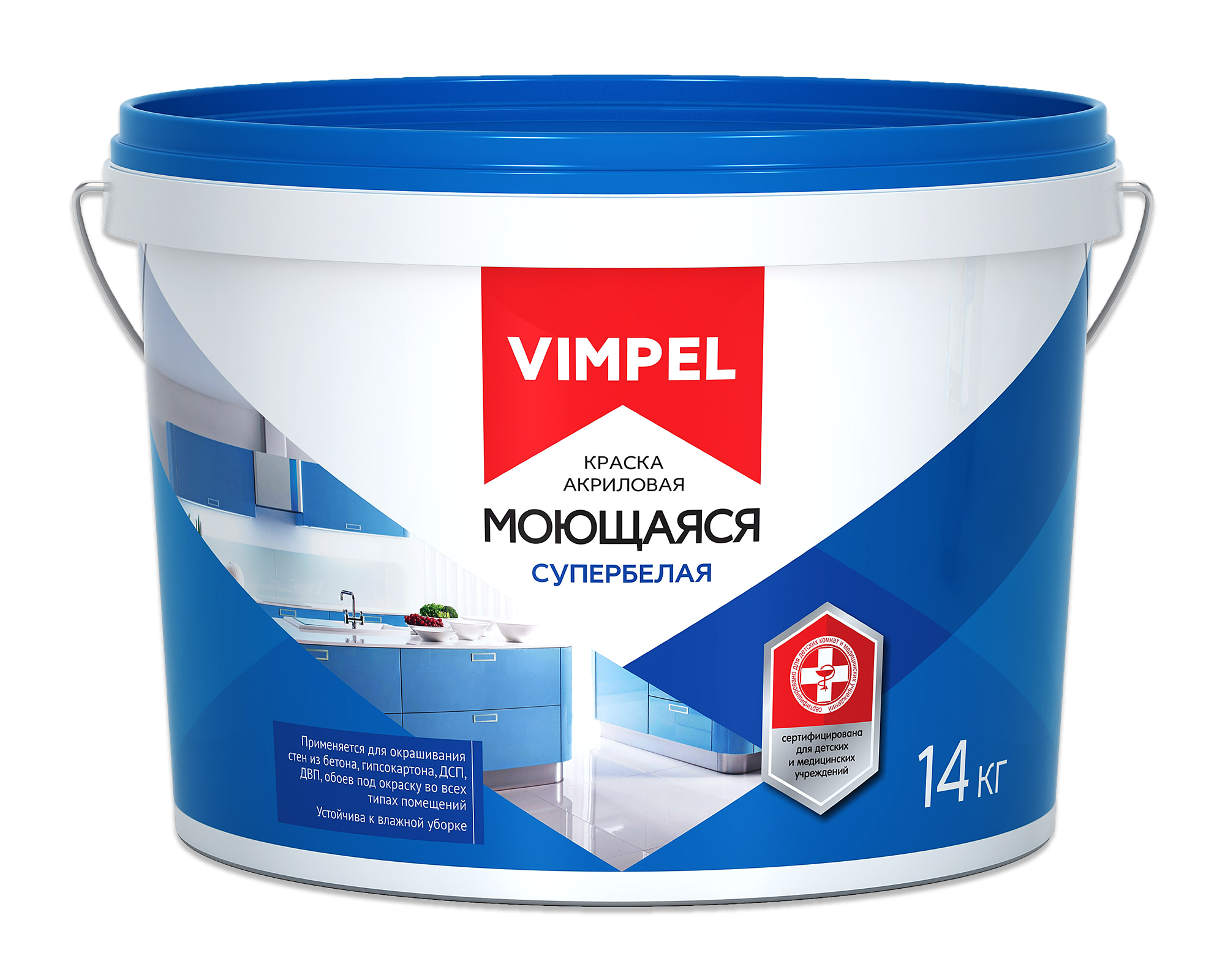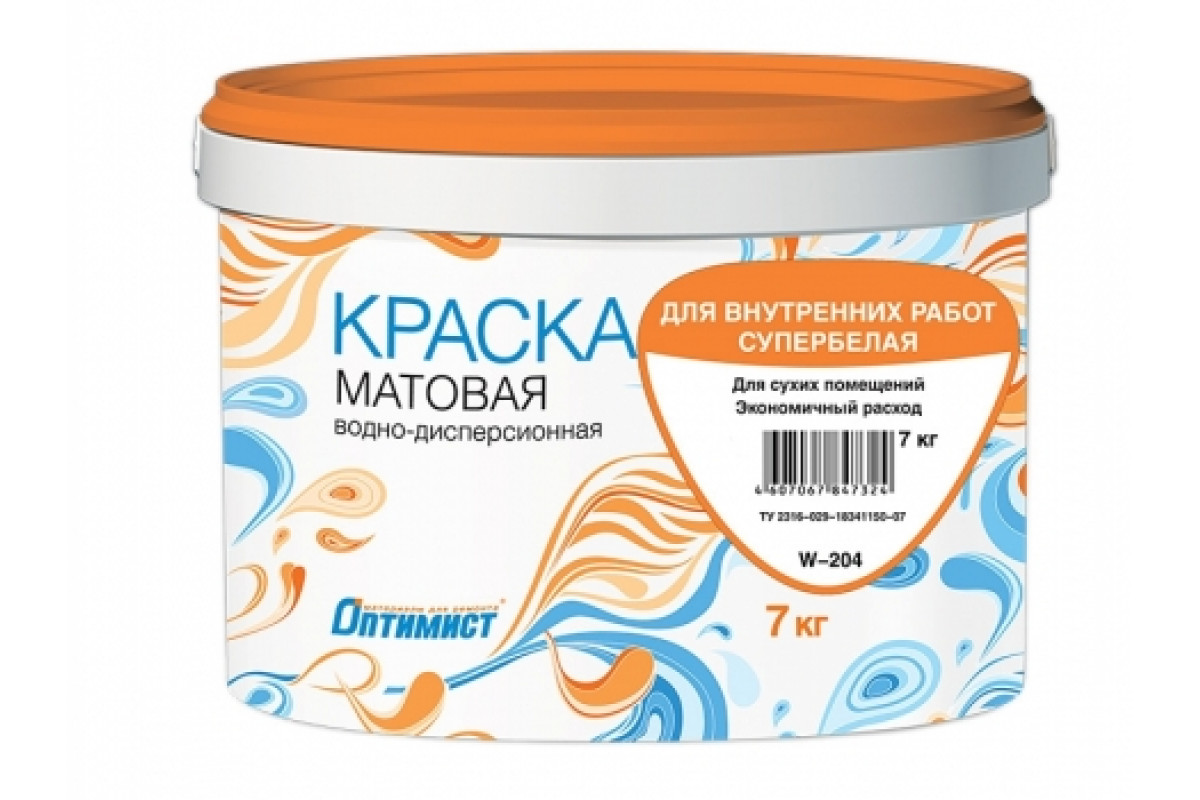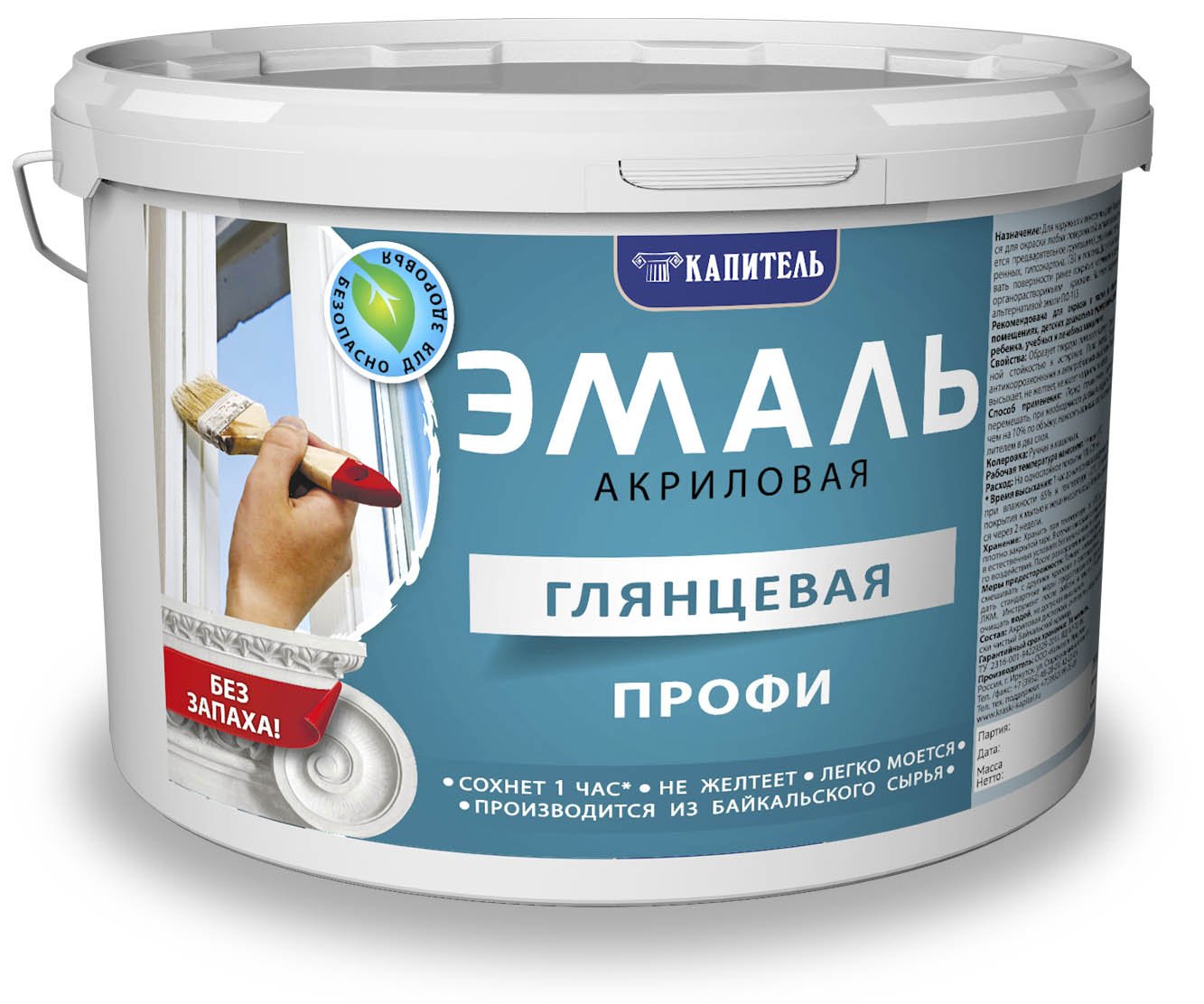Preparation and staining
The preparatory stage is equally important:
- White acrylic-based paint can be applied to the old coating only if there are no defects on the surface, if it does not flake off. Apply a primer to the surface and you can start painting.
- If the previous coating does not seem reliable to you, there are defects, it is better to remove it. To do this, use spatulas or a sander (if you need to remove wallpaper, paint or plaster). A chisel, hammer, and hammer drill will work well for removing tiles. It is necessary to clean off the entire finish, apply a primer and plaster with a roller (using a spatula and a rule, focusing on the level).


- The surface should be smooth, as all imperfections will be visible. The thickness of the paint is also important. It may take several coats to hide the base.
- Colored spots very often shine through the white coating, so all work should be done as carefully as possible.
- Instruments must be prepared in advance. For application, you need to prepare a roller (much better if it is polyamide or velor), a paint bath, brushes or a spray gun.
- Take care of the protection of the room: for this you need a film and construction tape. Prepare special or unnecessary clothing, hats, shoes, gloves, a ladder, and a long roller handle. A respirator is not needed, because this type of material, as a rule, does not have a strong odor.

The process of staining with acrylic paint is quite simple, you can handle it yourself and quickly:
- Bring the paint to the desired consistency by adding water or thinner (depending on the composition). A liquid solution will give a thinner layer, more thick material will be required. No need to keep paint open. It is necessary to pour or prepare the solution in portions, since here an obvious plus turns into a difficulty - the coating dries very quickly.
- If space permits, use a roller. Pour the paint into the recess of the bath, dip the roller there. Then it will need to be squeezed out on a special platform of the same bath - and you can paint.
- Paint hard-to-reach places with a brush.
- When spraying the composition with a spray gun, speed is important in order to prevent solidification.


Advantages
Wall decoration with this material is often used in children's rooms. The child often shows creativity, drawing everywhere with felt-tip pens, paints and pencils. This means that parents have to constantly clean and clean. Therefore, it is better to choose a finishing material that lends itself to wet cleaning.
A huge palette of color solutions opens before the consumer, so you can combine several shades, create a cozy and stylish interior design. For example, with the help of a color scheme, a white mixture acquires the desired color.

The composition of such paint is unique, therefore the surface is created even, since the top layer forms a film that has increased resistance to abrasion. Also, such a cladding will look great in the kitchen, where grease and soot accumulate on the walls and ceiling over time, so you have to constantly wash them.
Many renovation professionals note that washable paints are ideal coatings for structural wallpapers, plastered surfaces and walls made of plasterboard, brick, concrete or natural wood. It is safe to say that the composition is universal.
Varieties
The assortment of such paints is so diverse that you can choose not only by color, but also by composition and its characteristics. Latex, acrylic, silicone and water-based mixtures can be distinguished separately. Each of the listed options has its own characteristics and advantages, and is also used on different types of coating.

Acrylic paint
It is an interior washable compound that is used to decorate walls and ceilings in residential premises. One of the ingredients is the resin of the same name, so the mixture is highly elastic. Paint with such a base can easily be applied to wood flooring.

Latex composition
This material is more durable than acrylic mixture. The substance is suitable for finishing industrial premises, various institutions, establishments and organizations.
If you use it in an apartment, it is better to choose paint for kitchen cladding. The composition lends itself well to numerous washes, copes with high humidity, as well as abrasion. During cleaning, you can use brushes if you need to clean the coating.


Water-dispersive compositions
This paint is characterized by high adhesion, that is, it adheres well to the base. It is easy to apply, dries quickly and forms a tough coating on the surface that is resistant to wet scrubbing. The material is vapor-permeable, so the walls and ceiling "breathe".
Economical consumption is one of the advantages. Manufacturers offer such a composition in a matte version.

Scope of application
Acrylic paint can be called versatile. This coating is suitable for various surfaces (both inside and outside the building):
- processed (plastered, covered with plasterboard and tiles);
- untreated (concrete, made of bricks, blocks, gypsum).
This paint can be used not only on construction sites, it is used to cover wood, metal, glass, and fabric.
If we talk about an apartment or a separate room, then it can be noted that the use of such paints and varnishes is most often due to three factors:
- the need to make the room brighter;
- visual resizing;
- versatility (in terms of the ability to combine with other colors).


A white coating reflects light better: this can correct the situation if the windows face the dark side or there are not enough light sources. In addition, by lightening the floor or ceiling, you can create the illusion of increasing the height of the room. By painting all walls or two opposite walls, you can achieve the same effect, but in width or length.
You can play in contrast and make a door, window frame or plasterboard structure white.
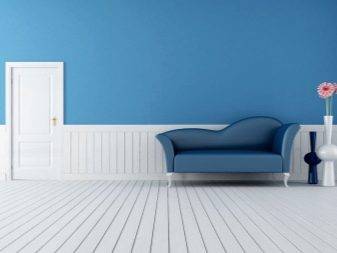
Composition and properties
Acrylic paints are produced on a water basis - water-dispersion and water-based. Aqueous dispersions dissolve exclusively with water, emulsions - with an organic solvent, they contain white spirit. The average drying time for one layer is within the range - from 40 minutes to an hour.
The mixtures consist of several coloring materials, produced on the basis of solid particles and polymers. The amount of "grind" (dispersion) determines the quality of the paint, affects the smoothness of the painted surface, color saturation and hiding power.

According to the initial whiteness, they are distinguished: super white, white, milky and some other shades. The purity of the color is determined by the degree of purification of the main elements - chalk, talcum or marble flour.
To impart special properties, the mixtures are filled with special substances. For example, in order to increase the drying rate, desiccants are added, and with an increase in the fire-fighting characteristics of the coating, fire retardants are added that impede the combustion process.

The washable ability of the wall is ensured by the presence of acrylic in the paint. But you should not use strong abrasive cleaning agents for cleaning, the strength of the coating requires the use of only a soap solution.
Manufacturers
A variety of compositions are presented on the market of paints and varnishes. Manufacturers produce not only white acrylic paints, but also other materials - in the form of thickeners, solvents, varnishes with acrylics.
Some brands have gained great popularity among consumers, but even among beginners there are decent ones with quality products. When choosing, you need to rely on three factors:
- customer reviews;
- personal experience;
- fit your budget.

Good reviews are given on the following brands:
- Dulux (Netherlands);
- Sniezka (Poland);
- Caparol (Russia);
- Lakra (Russia);
- "Tex" (Russia);


- Belinka (Slovenia);
- Kolorit and Joker, owned by Tikkurila concern (Ukraine);
- Sadolin (Finland);
- Farby Kabe (Switzerland);
- TehnoLux (Russia).
Production is carried out in different parts of the near and far abroad, as well as in Russia. The technology for the production of acrylic paint is almost the same everywhere, but the components and quality of raw materials are different, therefore, white coatings from different manufacturers may differ from each other.


In the next video, you will find more information about acrylic paints.
Views
Acrylic paints are produced in the form of enamels, varnishes, paints and aerosols. They are used for all types of surfaces, except for the floor. Pipes, ovens and radiators are often coated with heat-resistant white enamels. Aerosols are used to paint small surfaces.

The classification is extensive:
- by appointment - for internal or external work on the street;
- by type of surface - for wood, brickwork, metal, concrete, etc.:
- by properties - universal, water-repellent, heat-resistant;
- by the type of outer layer - glossy, matte;
- by composition - acrylic-silicone (matte, for outdoor use), styrene-acrylic for painting facades, vinyl-acrylic (super white, universal).


Interior paint is the leader among universal mixtures. Often creates a matte outer layer.
Easy to apply:
- on already plastered walls;
- concrete or brick;
- moisture resistant drywall;
- Chipboard, fiberboard;
- oil or alkyd base;
- metal pipes.
The labeling "for walls" or "for ceilings" implies different composition and technical characteristics of the product.

Structural paints constitute a special group. They are obtained by mixing a dispersed or emulsion base with special pastes or powders. Additives do not affect the change in properties, they only add relief or texture to the surface. Walls can feel like sandpaper to the touch, with special particles having a fluorescent or shimmering effect.

Distinctive features
The paint is based on polyacrylic substances. Additional elements are needed in order to improve the already remarkable characteristics of the coating. If the composition contains a water-dispersed emulsion, then this option is better suited for interior work.
Organic solvents are worth choosing for outdoor use because they are more resistant to environmental influences. Titanium oxide and chalk are added to such a white paint and varnish material.

Advantages of white acrylic paint:
- wide range of applications;
- durability;
- strength;
- water resistance;
- the ability to overlap the previous layer and adhere well to the working surface;
- saving time (due to ease of application and quick drying);
- color fastness (does not change under the influence of sunlight, heat or over time);
- lack of smell.


There are also some disadvantages:
- destruction at large temperature drops, freezing (based on water);
- can not be applied to some types of plastics (when diluted with organic solvents);
- quite high cost.

Views
White paint is divided into several types (depending on the scope of application):
- construction;
- interior;
- automobile;
- artistic;
- cosmetic.


In appearance, acrylic paint can be:
- matte;
- glossy;
- semi-gloss or semi-gloss;
- mother-of-pearl.
How the surface will look depends a lot on fillers and thickeners.
In addition, there are special paints with additives that enhance the protective properties of the coating:
- anti-corrosion;
- frost-resistant;
- moisture resistant (washable);
- non-flammable (only if they are water-soluble);
- elastic (make it possible to paint objects that somehow change their shape - bend or stretch) and so on.



